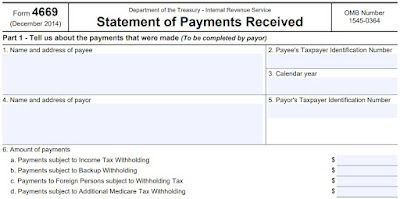I was
glancing over recent Tax Court cases when I noticed one that involved a rapper.
I’ll be
honest: I do not know who this is. I am told that he used to date Kylie Jenner.
There was something in the opinion, however, that caught my eye because it is
so common.
Michael
Stevenson filed his 2019 tax return showing federal tax liability over $2.1
million.
COMMENT: His stage name is Tyga, and the Court referred to him as “very successful.” Yep, with tax at $2.1-plus million for one year, I would say that he is very successful.
Stevenson had requested a Collection Due Process (CDP) hearing. It must have gone south, as he was now in Tax Court.
Why a CDP
hearing, though?
Stevenson
had a prior payment plan of $65 grand per month.
COMMENT: You and I could both live well on that.
His income
had gone down, and he now needed to decrease his monthly payment.
COMMENT: I have had several of these over the years. Not impossible but not easy.
The
Settlement Officer (SO) requested several things:
· Form 433-A (think the IRS equivalent
of personal financial statements)
· Copies of bank statements
· Copies of other relevant financial
documents
· Proof of current year estimated tax
payments
Standard
stuff.
The SO
wanted the information on or by November 4, 2021.
Which came
and went, but Stevenson had not submitted anything.
Strike One.
The SO was helpful,
it appeared, and extended the due date to November 19.
Still nothing.
Strike Two.
Stevenson
did send a letter to the SO on December 1.
He proposed
payments of $13,000 per month. He also included Form 433-A and copies of bank
statements and other documents.
COMMENT: Doing well. There is one more thing ….
The SO
called Stevenson’s tax representative. She had researched and learned that
Stevenson had not made estimated tax payments for the preceding nine years. She
wanted an estimated tax payment for 2021, and she wanted it now.
COMMENT: Well, yes. After nine years people stop believing you.
Stevenson
made an estimated tax payment on December 21. It was sizeable enough to cover
his first three quarters.
COMMENT: He was learning.
The SO sent
the paperwork off to a compliance unit. She requested Stevenson to continue his
estimated payments into 2022 while the file was being worked. She also
requested that he send her proof of payments.
The
compliance unit did not work the file, and in July 2022 the SO restarted the case.
She calculated a monthly payment MUCH higher than Stevenson had earlier
proposed.
COMMENT: The SO estimated Stevenson’s future gross income by averaging his 2020 and (known) 2021 income. Granted, she needed a number, but this methodology may not work well with inconsistent (or declining) income. She also estimated his expenses, using his numbers when documented and tables or other sources when not.
The SO spoke
with the tax representative, explaining her numbers and requesting any
additional information or documentation for consideration.
COMMENT: This is code for “give me something to justify getting closer to your number than mine.”
Oh, she also
wanted proof of 2022 estimated tax payments by August 22, 2022.
Yeah, you
know what happened.
Strike
Three.
So,
Stevenson was in Tax Court charging the SO with abusing her discretion by
rejecting his proposed collection alternatives.
Remember the
something that caught my eye?
It is someone
not understanding the weight the IRS gives to estimated tax payments while working
collection alternatives.
Hey, I get
it: one is seeking collection alternatives because cash is tight. Still, within
those limits, you must prioritize sending the IRS … something. I would rather
argue that my client sent all he/she could than argue that he/she could not
send anything at all.
And the
amount of tax debt can be a factor.
How much did
Stevenson owe?
$8 million.
The Court
decided against Stevenson.
Here is the
door closing:
The Commissioner has moved for summary judgement, contending that the undisputed facts establish that Mr. Stevenson was not in compliance with his estimated tax payment obligations and the settlement officer thus was justified in sustaining the notice of intent to levy.”
Our case
this time was Stevenson v Commissioner, TC Memo 2023-115.





